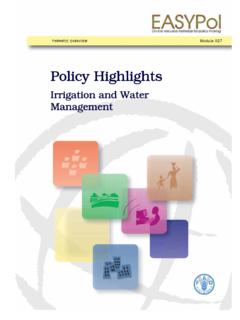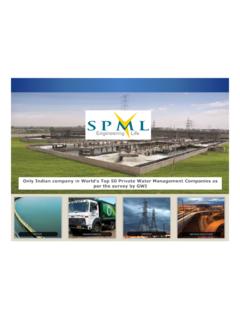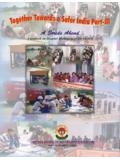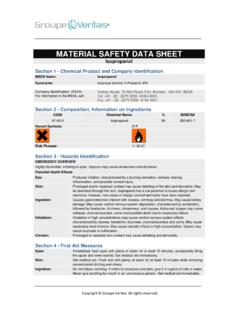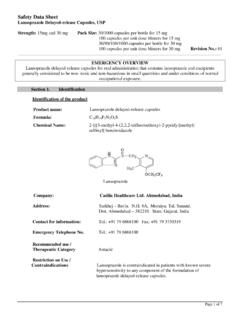Transcription of Joint Feasibility Study for Mumbai-Ahmedabad High …
1 Joint Feasibility Study forMumbai-Ahmedabad High Speed RailwayCorridorFinal ReportVolume 6 July 2015 Japan International Cooperation Agency(JICA) Ministry of Railways, Republic of India(MOR)Japan International Consultants for Transportation Co., Consultants Global Co., Koei Co., LtdEI15-137CR(5) Joint Feasibility Study for Mumbai-Ahmedabad High Speed Railway Corridor FINAL REPORT Contents Volume 1 Chapter 1 Overview of Study 1-1 Objectives of Study 1-1 Study Background 1-1 Purpose of the Study 1-2 Region Targeted by the Study 1-2 Contents of Study
2 1-2 Overall Organization of Study Operations 1-3 Study Implementation Framework 1-5 Schedule 1-7 Chapter 2 Basic Route Information 2-1 The Study Area 2-1 Administrative Structure 2-2 Present Population 2-3 Economic Condition 2-7 GDP 2-7 Number of Worker 2-7 Chapter 3 Analysis of Relevant Data/Information 3-1 Review of HSR Plans
3 3-1 Indian Railways Vision 2020 3-1 High-speed Railway Vision 3-2 A Report by an Expert Committee on Modernization of Indian National Railway 3-4 Review of HSR Study between Mumbai and Ahmedabad 3-5 Pre- Feasibility Study Commissioned by the Indian Ministry of Railways Republic of India in 2009 3-5 Study Commissioned by the Ministry of Land, Infrastructure, Transport and Tourism of Japan in 2012 3-10 Review on Transport related Sector 3-16 Present Situation of Existing Traffic Mode and Future Plans 3-16 Organization of Ministry of Railways, Republic of India (MOR)
4 3-22 Operation/Maintenance of MOR including Safety Management 3-35 Procedure for Opening New Line in IR 3-54 Joint Feasibility Study for Mumbai-Ahmedabad High Speed Railway Corridor FINAL REPORT Review of Existing Related Plans & Studies 3-57 Mumbai 3-57 Surat 3-66 Vadodara 3-69 Ahmedabad 3-71 Public Private Partnership - Legal, Institutional and Financing Framework 3-75 PPP History.
5 Policy and Strategy in India 3-75 PPP Institutional Framework 3-76 PPP Project Application and Approval Process 3-77 Project Approval to Bidding and Selection Flow 3-78 Railway Projects Open to Participation by Foreign Capital 3-79 Financing Sources under PPP 3-79 The Dedicated Freight Corridors (DFC) 3-83 Background 3-83 Western Freight Corridor 3-83 Eastern Freight Corridor 3-85 Operation & Maintenance 3-88 Design Parameters 3-88 Estimated Cost & Funding Pattern
6 3-89 Business Plan 3-90 The Dedicated Freight Corridor & The High Speed Railway Corridor Some Common Objectives 3-91 Plan for Semi High Speed Train on India Railways 3-93 The Quest for Speed 3-93 Progress of Speed in Rail Transport Global Experience 3-93 Progress of Speed in Rail Transport Indian Railway Experience 3-95 Present Policy Regarding Increasing Speed of Passenger Services on IR 3-95 Plan for Introducing Semi High Speed Trains with Maximum Speed of 160 Kmph 3-96 Augmenting Infrastructure for Up-gradation to 160 Kmph 3-97 Chapter 4 Formulation of HSR Basic Plan in India 4-1 Definition of High Speed 4-1 Necessity of HSR System in India
7 4-4 Role of High Speed Rail 4-4 Joint Feasibility Study for Mumbai-Ahmedabad High Speed Railway Corridor FINAL REPORT High Speed Rail System is Quite Different System from Conventional Line System 4-4 Necessity of HSR in India 4-5 Basic Characteristics of HSR System in the World 4-8 Overview of Main Characteristics 4-8 Construction Method 4-13 Operation Method 4-14 Interoperability and Gauge Selection 4-18 Interoperability 4-18 Gauge Selection 4-27 Required Levels on Services / Facilities 4-31 Maximum
8 Operation Speed 4-31 Traffic Frequency 4-32 Countermeasures against Earthquakes and Natural Disasters 4-33 Basic Technical Standard and System Selection 4-38 Schedule of Dimension for Mumbai-Ahmedabad High Speed Railway Corridor 4-39 Proposed Primary SOD for Mumbai-Ahmedabad High Speed Railway Corridor 4-42 Track Structure 4-61 Electric Power Equipment 4-67 Signaling/Telecommunications 4-73 Rolling Stock 4-79 Alignments & Station Location 4-87 Workflow of Comparison of Alignments and Station Locations 4-87 Site Survey and Meeting with State Government
9 And Local Railway Bureaus 4-87 Overall Alignment and Station Locations 4-92 Preliminary Survey of Alignment 4-172 Chapter 5 Review of Travel Demand Forecasts and Setting of Fare Levels 5-1 Traffic Surveys


